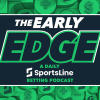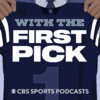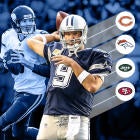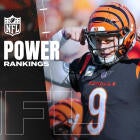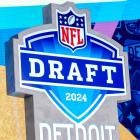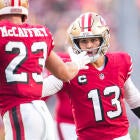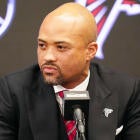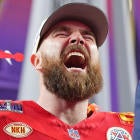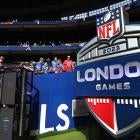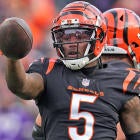What a difference a year makes.
A year ago, quarterback Tony Romo was viewed as the Dallas Cowboys' most indispensable player. Dallas was in the middle of a season where chances to repeat as NFC East champions were derailed because of Romo's broken collarbone that limited him to just four games. Owner Jerry Jones was receiving criticism for failing to address the backup quarterback position in any meaningful way since Kyle Orton's departure.
The Cowboys went 1-11 without Romo.
A similar fate was expected this season when Romo fractured a vertebra in his back during the third preseason game against the Seattle Seahawks on Aug. 25. Romo was initially expected to miss six to 10 weeks because of the injury.

Dallas has the NFL's best record this season at 8-1 without Romo largely because of the surprising play of rookie quarterback Dak Prescott and 2016 fourth overall pick Ezekiel Elliott leading the NFL with 1,005 rushing yards. Prescott, a 2016 fourth-round pick, has completed 66.8 percent of his 280 passes for 2,339 yards with 14 touchdowns and only two interceptions. Prescott's 106.2 passer rating is the fourth best in the NFL.
Jones declared that the team is going with the hot hand, Prescott, after Sunday's come-from-behind victory over the Pittsburgh Steelers despite his affinity for Romo. The four-time Pro Bowler is expected to be active for the first time this season on Sunday against the Baltimore Ravens.
And on Tuesday, Romo delivered a heartfelt speech at the Cowboys headquarters in Frisco, Texas, and made it clear he would not be a distraction and that Prescott has "earned the right to be our quarterback." You can read the entire speech here.
So what does Prescott's emergence and Romo's concession speech mean for the Cowboys moving forward? Here are some pertinent questions and answers relating to Romo and the Cowboys' quarterback situation.
The rest of the 2016 season
Will Romo start again for the Cowboys this season? There's a general principle in sports that players don't lose starting jobs because of injury. It doesn't appear to be applicable in Dallas because of Prescott's emergence. Playing time is now largely beyond Romo's control.
Barring an injury to Prescott or him beginning to play like a rookie for an extended period, Romo probably won't see any meaningful action this season.
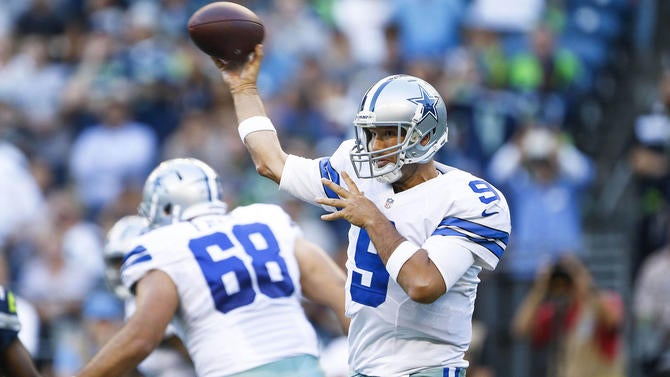
Can Romo and Prescott co-exist long term? Both quarterbacks are under contract through the 2019 season. Romo is scheduled to make $14 million in 2017. His 2018 and 2019 salaries are $19.5 million and $20.5 million. All of Romo's salaries are non-guaranteed.
Romo has the NFL's largest 2017 salary cap number at $24.7 million. Prescott is making his league minimum for the next three seasons with $540,000, $630,000 and $720,000 salaries.
Jones could be intrigued by having two starting-caliber quarterbacks in Dallas for the foreseeable future. He would be unnecessarily inviting a potential quarterback controversy. Romo is accepting his backup role for the good of the team right now. Next year could be a different story since Romo clearly still wants to be a starter. The longer both quarterbacks are on the roster, the greater chance of the situation to become a distraction. It's also harder for Prescott to become a true leader on the Cowboys with Romo around.

A $14 million salary is almost unheard of for a backup quarterback. Dallas would probably ask Romo to take a pay cut from his $54 million over the next three years to serve in that capacity. Top backup quarterback money is currently $7 million to $7.5 million per year with incentives and salary escalators that could make a deal worth as much $12 million per year.
Romo is more likely to force the Cowboys to carry him next year under his current contract or release him than take a pay cut.
I suspect that Romo has already had conversations with his representatives about being traded or released in the offseason if he can't be the starter in Dallas. I don't have any specific knowledge of such conversations. This belief comes from numerous conversations I had with athletes in adverse situations while working as a player agent for multiple clients, which include Hall of Fame defensive tackle John Randle, Pro Bowl wide receivers Jimmy Smith and Keenan McCardell, and Oakland Raiders coach Jack Del Rio.
There was a tendency for the players, not necessarily the ones I mentioned, to initially think that the grass could be greener on the other side during when venting to me about their circumstances.
If Romo and the Cowboys part ways
How soon could the Cowboys trade Tony Romo? The trading period for the 2016 season ended Nov. 1. Players can't be traded again until 4 p.m. ET on March 9 when the 2017 league year begins. Trades can be agreed to but not consummated before the start of the 2017 league year.
LeSean McCoy's trade from the Philadelphia Eagles to the Buffalo Bills was announced a few days before the 2015 league year trading period began. The same thing happened this year with DeMarco Murray's trade to the Tennessee Titans from the Eagles.
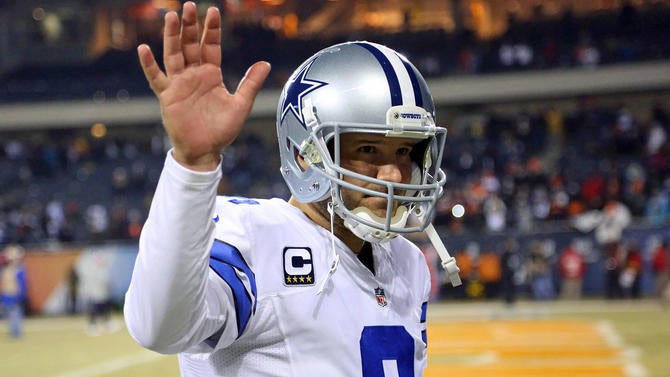
What sort of compensation should the Cowboys expect for Romo? The Cowboys will likely view the Sam Bradford trade compensation as a good benchmark for dealing Romo. The Eagles received a 2017 first-round pick and a 2018 fourth-round pick that can elevate to a third- or second-round pick under certain conditions from the Vikings for Bradford when Teddy Bridgewater went down late in the preseason with a gruesome knee injury.
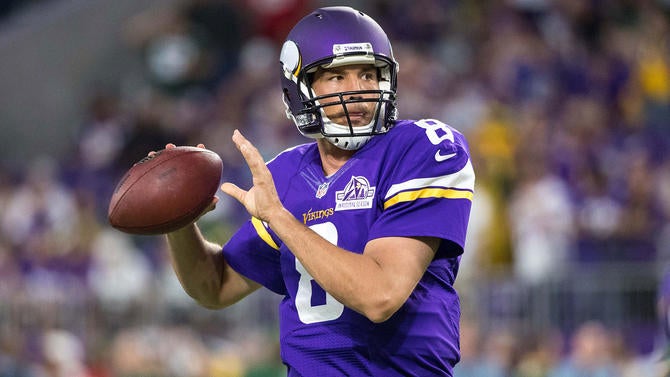
It's hard to imagine any team giving up a first-round pick for a quarterback who will be 37 years old next season with an injury history.
The type of compensation the New York Jets gave the Green Bay Packers in 2008 for a soon-to-be 39-year-old Brett Favre seems realistic. Green Bay received a 2009 third-round pick. The pick was originally a conditional fourth-round pick that had the potential to become as much as a first-round pick depending on the Jets and Favre's performance in 2008.
Although Favre was older than Romo, he led the Packers to the NFC Championship Game while being named an All-Pro in the season prior to his trade.

What teams could be interested in Romo? There should be a trade market for Romo despite durability concerns and his age. Romo's health is less of a risk than Peyton Manning's in 2012 after he missed the 2011 season because of multiple neck surgeries.
Cutting in Romo's favor is the caliber of quarterbacks expected to be available for the 2017 NFL Draft. They aren't as highly regarded as their predecessors in the last two drafts.
Here are five teams that could be landing spots for Romo in 2017:
 Chicago Bears
Chicago Bears
The Jay Cutler era should be coming to end with the Chicago Bears. His contract, which no longer contains guaranteed money after this season, is a primary reason why he remained in Chicago when general manager Ryan Pace and coach John Fox took over in 2015.
Another veteran quarterback could be appealing since they could be on the hot seat in 2017 after two straight losing seasons.

 New York Jets
New York Jets
The Jets' 2017 starting quarterback likely isn't on the current roster although 2015 fourth-round pick Bryce Petty will get an opportunity to make his case. A divorce between Ryan Fitzpatrick, who only regained his starting job after benching because of season ending knee injury to Geno Smith, is inevitable.
The Jets could be to Romo's liking as a veteran team built for the present. Head coach Todd Bowles has a history with Romo. He was the Cowboys' secondary coach 2005 through 2007. Fitting in Romo's $14 million 2017 salary would require some salary cap gymnastics because the Jets have $171.66 million in 2017 cap commitments with 51 players under contract and less than $1 million of cap room to carry over from this season.
The 2017 salary cap should be in the $168 million neighborhood if the 8 percent annual growth from recent years continues.
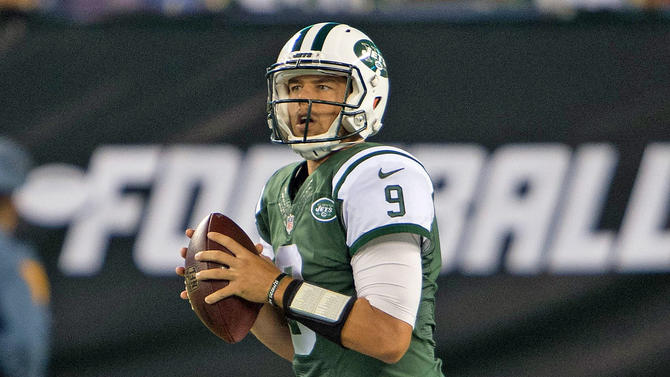
 Denver Broncos
Denver Broncos
The Broncos should be an intriguing situation to Romo. This would only become a possibility with Denver being disappointed in its quest to repeat as Super Bowl champions.
General manager and executive vice president of football operations John Elway would have to be convinced that Trevor Siemian is better suited as a backup and 2016 first round pick Paxton Lynch isn't ready to quarterback a championship-caliber team.
Romo could have an ally in defensive coordinator Wade Phillips. He was Romo's head coach in Dallas for three and a half seasons from 2007 to 2010. Romo probably made a lasting impression on Elway in 2013 when he almost single-handedly defeated a Broncos team headed to the Super Bowl. He threw for 506 yards in a 51-48 loss.
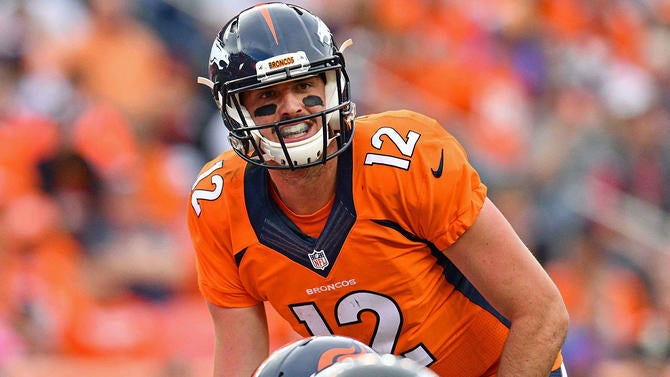
 San Francisco 49ers
San Francisco 49ers
The 49ers and Colin Kaepernick have been heading for a parting of the ways ever since he was given permission to seek a trade in the offseason. Kaepernick reworked his contract a few weeks ago so he has the option to become an unrestricted free agent after the season.
San Francisco wouldn't be an ideal destination for Romo even though they would have close to $100 million in cap room with Kaepernick off the books. Romo probably doesn't want to spend his remaining NFL years with a team that's in rebuilding mode.
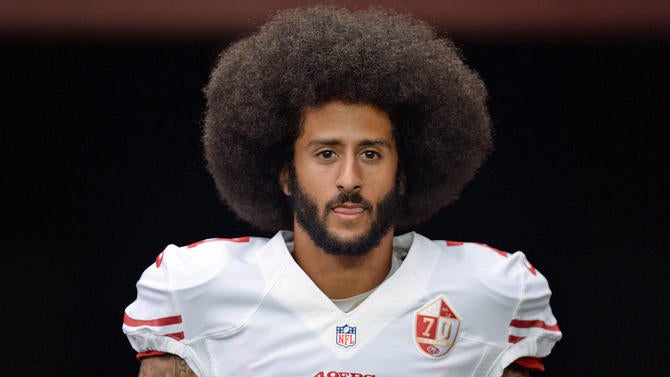
 Cleveland Browns
Cleveland Browns
The Cleveland Browns are in the best position to absorb the remaining three years of Romo's contract for $54 million since they should have over $110 million in cap space during the offseason. Romo doesn't appear to fit the new regime's Moneyball-driven approach to the roster.
Most of the older, higher priced players were released during the offseason. Accumulating an abundance of draft picks seems to be the new regime's prime method of talent acquisition.
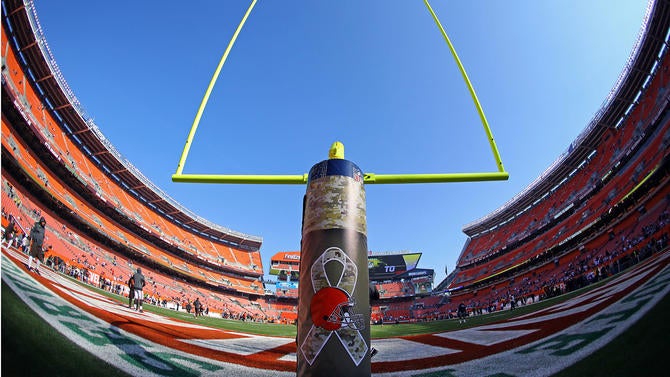
What are the salary cap ramifications for trading or releasing Romo? When a player is released or traded, the remaining proration of the salary components treated like signing bonus immediately accelerate into his team's current salary cap. This is known as dead money, a cap charge for a player no longer on a team's roster.
There are two major exceptions to this general rule of bonus proration accelerating. Only the current year's proration counts toward the cap with players released or traded after June 1. The bonus proration in future contract years is delayed until the following season.
A team can also release two players each year prior to June 1 (known as a post-June 1 designation) that will be treated under the cap as if they were released after June 1. With a post-June 1 designation, a team is required to carry the player's full cap number until June 2 even though he is no longer a part of the roster. The player's salary comes off the books at that time unless it is guaranteed.
The Cowboys will have $19.6 million of dead money relating to Romo's 2013 extension and subsequent contract restructurings for cap purposes in 2014 and 2015 if he is released or traded prior to June 2. Romo's $25.2 million and $23.7 million 2018 and 2019 cap numbers would be wiped away once the roster move was made. The Cowboys would be able to take the cap hit over 2017 and 2018 with either one of these transactions occurring after June 1. There would $10.7 million of dead money in 2017, which would free up $14 million of cap space. Romo would be on the books with an $8.9 million cap charge in 2018.
There is a school of thought that Dallas should manage the salary cap with Romo's $24.7 million cap hit since only $5.1 million would be saved on the cap with a trade or release early in the offseason. The issue is Dallas has the most 2017 salary cap commitments in the NFL at $176.36 million with 46 players under contract and just $2.8 million of unused cap space that can be carried over to next year.
The Cowboys project to almost $9 million over the expected 2017 cap limit using offseason cap accounting rules.
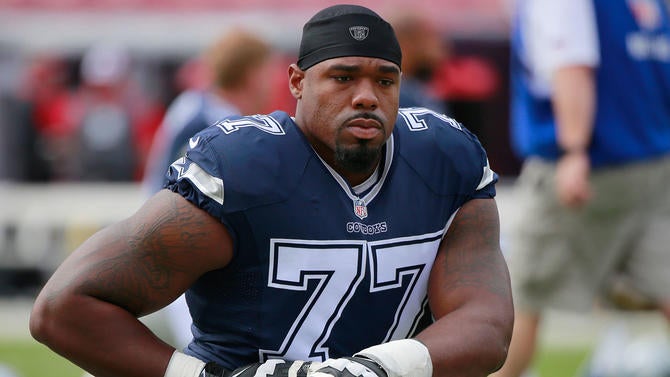
Expect the Cowboys to engage in their annual restructuring of contracts to free up cap space by continuing to push cap obligations into the future. The most likely candidates to restructure are Tyron Smith, who has a league-high $15.8 million 2017 cap number for offensive tackles, Travis Frederick since his $14.871 million 2017 cap hit leads centers by a good margin, and Dez Bryant because of his $17 million 2017 cap charge, which is also tops among wide receivers. Smith has restructured his contract in each of the last two years.
The Cowboys would have more cap flexibility if they hadn't played the restructure game with Romo. His 2017 cap number was originally $19 million in his 2013 extension. $14 million of cap room could have been gained with a release or trade if his extension had been left alone.
If Romo calls it a career
Could Romo really consider retiring? It would be surprising if Tony Romo retired after the season. He doesn't sound like someone ready to hang up his cleats. A majority of NFL players don't go out on their own terms. They still want to play football when teams no longer value their services at all or at a level where playing is no longer worth their while financially (i.e.; Brian Urlacher and
Romo probably doesn't want to end his career backing up Prescott even if he wins a Super Bowl ring this season. Based on Romo's 2014 performance when he was a second team All-Pro and led the NFL with a 113.2 passing rating and 69.9 completion percentage, he probably views himself as an elite quarterback when healthy.
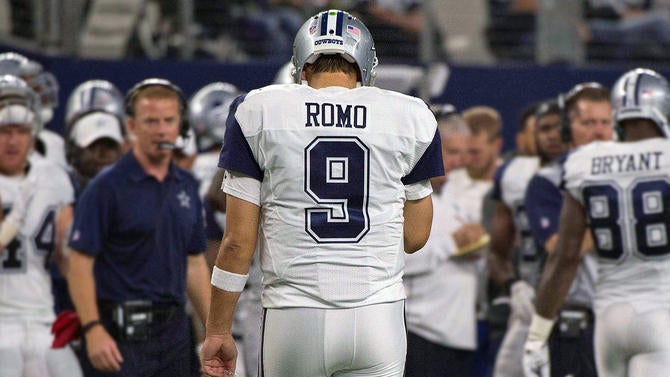
The Cowboys would have the right to recoup the $5 million allocated to 2017 under the salary cap from the $25 million signing bonus in his 2013 six-year, $108 million contract extension with retirement. An additional $14.6 million could be recouped because of 2014 and 2015 contract restructures where Romo converted $28.5 million of base salary into signing bonus to create salary cap room for the Cowboys.
Since Romo didn't have the language allowing the team to recover funds converted to signing bonus removed from the restructured contracts or limit recovery to the particular year in which the restructure took place, the Cowboys have rights to money they wouldn't have otherwise had it remained base salary. The NFL Collective Bargaining Agreement prevents teams from recovering base salary after it has been paid.
Teams aren't required to recoup money when a player retires but most do. Calvin Johnson has already repaid the Detroit Lions $3.2 million relating to the $16 million signing bonus in his 2012 extension.



